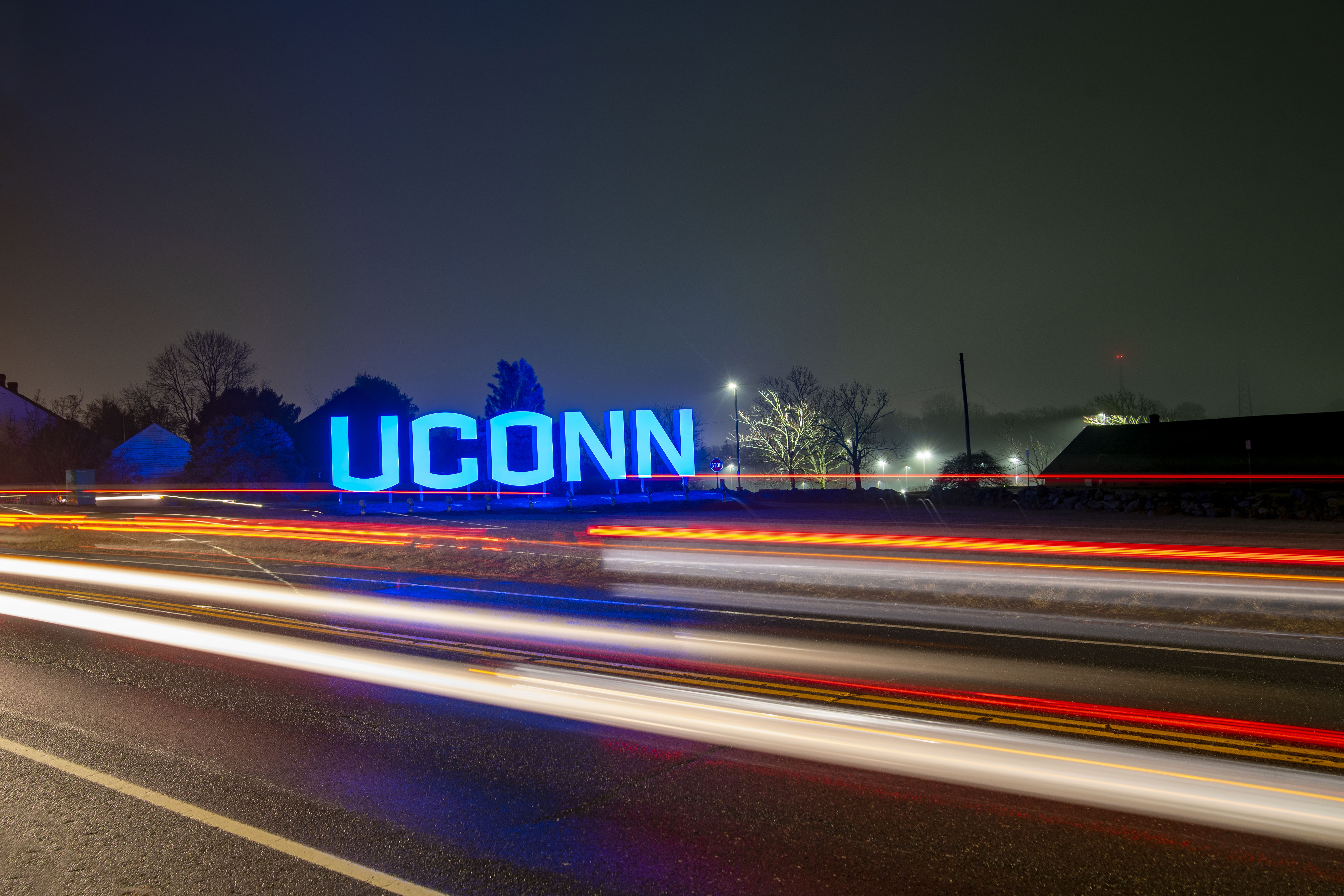About 5,750 first-year students and 950 transfer students have joined UConn as part of its Class of 2024, with some living in Storrs and Stamford residence halls and others participating through online learning from as far away as China.
The COVID-19 pandemic has prompted many changes at UConn for the new academic year, but one thing remains the same: Its first-year students continue to bring academic talent and a strong sense of civic responsibility, while also reflecting a rich diversity of ethnic and racial backgrounds, income levels, and aspirations.
Classes begin Monday at all campuses. About 5,000 residential students have already been on campus at Storrs and about 235 others at Stamford since the weekend of Aug. 14 to allow time for COVID-19 testing and a precautionary 14-day self-quarantine.
Of the 950 transfer students joining the 5,750 new first-year students, with a large number of them transferring to UConn from Connecticut community colleges and other in-state institutions.
Facing travel restrictions and other pandemic-related constraints, UConn and many universities nationwide had worried over the past six months whether they would lose large numbers of out-of-state and international students from their new and returning student ranks.
However, UConn was able to retain current students through its robust online learning options, while also hitting its goal of about 500 new first-year international students with the help of a new initiative approved earlier in the year by the UConn Board of Trustees.
For the first time, UConn was able to establish programs in which its students are studying on the campuses of two of its international partner institutions – East China Normal University in Shanghai and the University of Nottingham’s campus in Ningbo, a few hours to the south.
Several hundred UConn students are participating in the program at those sites. They are taking a full load of courses at the UConn partner schools and, in the case of incoming freshmen, they also are accessing UConn’s First-Year Experience courses remotely. UConn students at Nottingham live on that campus, while UConn tasked an academic programs provider with helping its students at East China Normal University secure housing.
UConn remains very attractive to incoming students, and the University has worked very hard over the past six months to be flexible and creative in delivering the best experience possible for our new and returning students. — Nathan Fuerst, vice president for enrollment planning and management
The institutions are also working with UConn to help it offer cultural programs, visits from UConn alumni, and other activities to ensure they know they are a critical part of the UConn community despite their temporary distance from Connecticut.
“The University’s leadership was very forward-thinking in considering the difficulties our international students were likely to face in an environment when in most cases they couldn’t travel here,” says Vern Granger, UConn’s director of undergraduate admissions.
“Because of that planning and foresight, UConn was able to establish and enhance partnerships with other institutions in a way that lets us provide those students with a meaningful educational experience as members of our community, despite the distance,” he says.
UConn’s Class of 2020 is the most diverse incoming first-year cohort to date, with almost 44.7 percent of its members being students of color, of which about 18 percent are Hispanic/Latinx backgrounds and about 7.5 percent are Black. In addition, new enrolling UConn students come from 162 of Connecticut’s 169 towns and cities.
“UConn remains very attractive to incoming students, and the University has worked very hard over the past six months to be flexible and creative in delivering the best experience possible for our new and returning students,” says Nathan Fuerst, UConn’s vice president for enrollment planning and management.
For instance, the significant increase in UConn’s online course offerings is giving students opportunities to more quickly fill requirements than if they had to wait for a particular course to be offered on their home campus and have spaces open there.
Now, even if they are based at one campus, they can enroll in the required course if it’s offered online at another campus, helping shorten their time to graduation and save the money of potentially staying an extra semester.
UConn’s regional campuses in Stamford, Hartford, Waterbury and Avery Point were popular choices among many first-year students, particularly those who decided to stay home and save money during the pandemic while still being within commuting distance of a regional campus.
Of the 5,750 new first-year students joining UConn this semester, nearly 2,000 enrolled at one of the regional campuses. They were attractive options for many transfer students, too, with about 200 of those 950 incoming students selecting a regional campus.
About half of all UConn students – including undergraduates, graduate-level and professional programs such as law and medicine – will be participating in at least one in-person class during the fall semester under a hybrid learning model, and the other half will take their coursework online, according to the preliminary data.
As of the most recent figures available, UConn’s fall 2020 overall student body numbers 31,500 students, with Storrs serving as the home campus for about 22,600 of those undergraduate and graduate students. That overall total also includes 558 students in the School of Law, and 830 medical and dental students at UConn Health.
The final enrollment figures will be updated after the 10th day of classes, as is standard. The numbers might change more this semester than in previous years due to adjustments in schedules, decisions about whether to study in person or online, and other factors.



